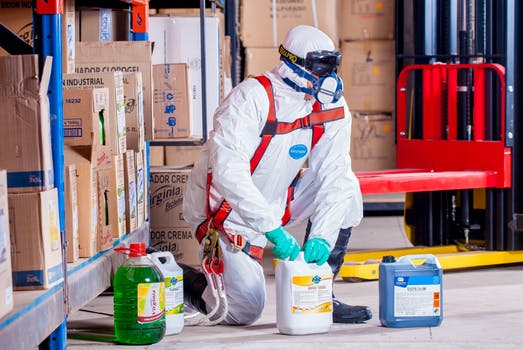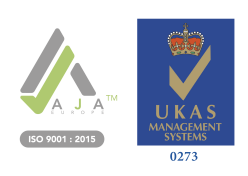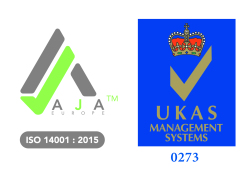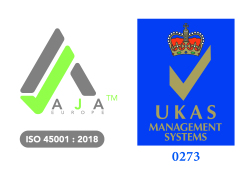Health and Safety laws in the UK explained
Health and safety laws in the UK explained – everything you wanted to know about health and safety but were afraid to ask!
Whether you're starting up a new business, employing more staff, or are a one-man band - or need to brush up on health and safety - we've got the lowdown on everything you need to know about health and safety laws in the UK...
If you are setting up a new business health and safety legislation can be a minefield, but with the right knowledge - and importantly training - it’s much less complicated than you think! Generally, health and safety laws apply to every business in all industry sectors. As an employer, or a self-employed worker, you’re responsible for health and safety in your business. The steps you need to take to comply with health and safety laws depend on the scale, size and nature of your business. If you’re a low-risk small and medium-sized business (SME) the measures you need to take should be relatively straightforward.
Who’s in charge of enforcing H&S legislation?
The Health and Safety Executive (HSE) is responsible for regulating and enforcing workplace health and safety laws in the UK, with assistance from local authorities and other enforcing authorities; including the police. For comprehensive information, helpful downloads, news on changes in the law, and specific guidance to the laws applying to your sector check out www.hse.gov.uk.
BUSINESS BASICS: THE MAIN LAWS AND REGS
1. The Health and Safety at Work Act 1974
Britain has an excellent workplace health and safety record, and this is largely due to The Health and Safety at Work Act 1974. HASAWA 1974 is the principal / primary piece of legislation governing health and safety I the UK. This Act of Parliament lays down wide-ranging laws for employers to ensure as far as is reasonably practicable the health safety welfare of all employees, as well as others on their premises including casual workers, clients, the self-employed, visitors and the general public.
General duties of employers to their employees:
- To ensure, as far as is reasonably practicable, the health, safety and welfare at work of all his employees.
- The provision and maintenance of plant and systems of work that are safe and without risks to health.
- Safety and absence of risks to health in connection with the use, handling, storage and transport of articles and substances;
- Suitable provision of information, instruction, training and supervision.
- The provision and maintenance of a safe working environment with adequate facilities.
- For workplaces with five or more employees, employers must prepare - and revise when appropriate - a written health and safety at work policy including the organisation and arrangements for carrying out the policy; and to bring the statement and any revision of it to the notice of all his employees.
2. The Workplace (Health, Safety and Welfare) Regulations 1992
The regulations expand on the duties outlined for employers under section 2 of the Health and Safety at Work etc Act 1974 to ensure, so far as is reasonably practicable, the health, safety and welfare of their employees at work, and are intended to protect the health and safety of everyone in the workplace, and ensure they have adequate welfare facilities. The regulations apply to most workplaces (with the exception of construction sites; ships and mines) and cover a wide range of basic health, safety and welfare issues including: Ventilation; temperatures in indoor workplaces; work in hot or cold environments; lighting; cleanliness and waste materials; room dimensions and space; workstations and seating; drinking water; rest and eating facilities,
3. The Management of Health and Safety at Work Regulations 1999
These regulations were brought in to make clearer to employers their duties outlined in the Health and Safety at Work Act 1974.
They outline the main requirement of employers to carry out a risk assessment (link). Employers with five or more employees need to record the significant findings of the risk assessment. Our Five Steps to risk assessment blog will give you more information.
Since the Health and Safety at Work Act in 1974, most of the UK’s modern health and safety laws have come from Europe and are based on the principle of risk assessment.
4. The Health and Safety (Display Screen Equipment) Regulations 1992 
The main employer duties are to carry out a risk assessment of workstations used by employees to reduce any identified risks. The regulations apply to all display screen equipment (DSE) including PCs, laptops, tablets and smartphones, and apply to all workers who use DSE daily, for an hour or more at a time.
Our Working with DSE course covers the risks of DSE work; the effects of excessive use of DSE, including Repetitive Strain Injury; the importance of good posture and changing position; completing individual self-assessments.
5. The Manual Handling Operations Regulations 1992
 The regulations define manual handling as:
The regulations define manual handling as:
“… transporting or supporting of a load (including the lifting, putting down, pushing, pulling, carrying or moving thereof) by hand or bodily force”.
The load can be an object, person or animal.
The 1-2-3 step advice set out by the MHOR 1992 on dealing with risks from manual handling are:
1. As far as is reasonably practicable, avoid hazardous manual handling operations.
2. Assess any hazardous manual handling operations that can’t be avoided.
3. Reduce the risk of injury so far as is reasonably practicable.
Our manual handling course covers the MHOR 1992 in more depth as well as the basic principles of moving and handling operations; understanding the spine; back injuries.
6. The Personal Protective Equipment at Work Regulations 1992 
These regulations concern the duties of employers regarding the provision and use at work of personal protective equipment (PPE). PPE is equipment that is designed to protect the wearer's body from injury or infection, including items like safety helmets, eye protection, gloves, high-vis clothing, safety footwear and safety harnesses. Employers must provide PPE free of charge to employees and ensure they are adequately trained in how to use it safely.
7. The Provision and Use of Work Equipment Regulations (PUWER) 1998
Often referred to as PUWER, these regulations outline the duties of people and businesses who own, have control over, or operate work equipment. It doesn’t matter if businesses and organisations own the work equipment or not. The equipment must be suitable for the intended use; safe for use; used only by people who have received adequate training and instruction; accompanied by suitable health and safety measures including emergency stop devices and clearly visible markings.
Some work equipment is also subject to other legislation, for example, lifting equipment is also covered by Lifting Operations and Lifting Equipment Regulations 1998 (LOLER).
8. The Reporting of Injuries, Diseases and Dangerous Occurrences Regulations 1995, updated to RIDDOR 2013
RIDDOR regulations requires employers, and other people who are in control of work premises, to report and keep records of work-related accidents/incidents which cause deaths, serious injuries and occupational diseases.
The list of ‘specified injuries’ set out in RIDDOR 1995 were replaced in RIDDOR 2013.
Accidents to members of the public or others who are not at work must also be reported if they result in an injury and the person is taken directly from the scene of the accident to hospital for treatment.
Employers and self-employed people must report diagnoses of certain occupational diseases including occupational asthma; hand-arm vibration syndrome; tendonitis.
Full texts of Acts of Parliament and secondary legislation Statutory Instruments (SIs), often referred to as ‘regulations’ are available on the website www.legislation.gov.uk.







